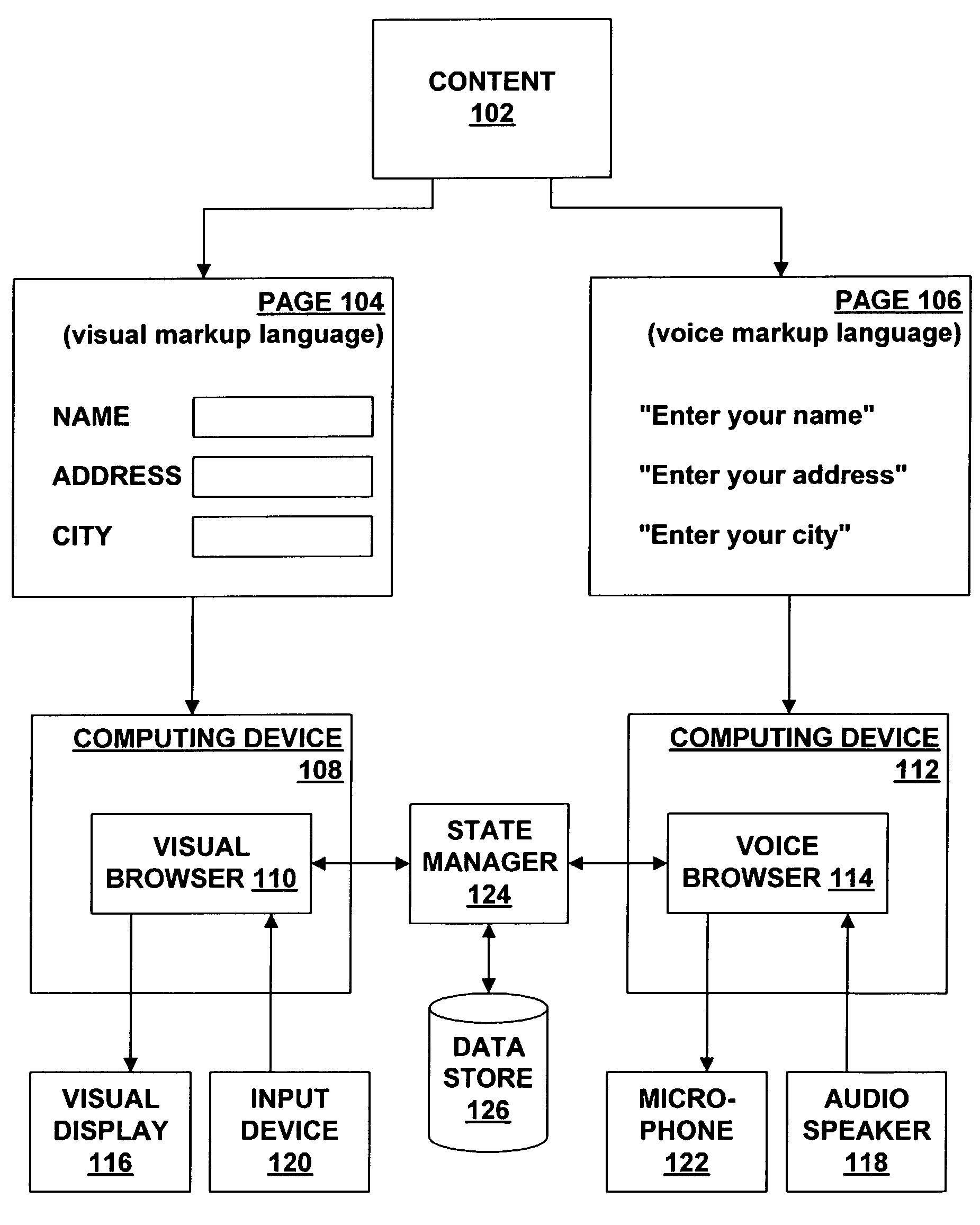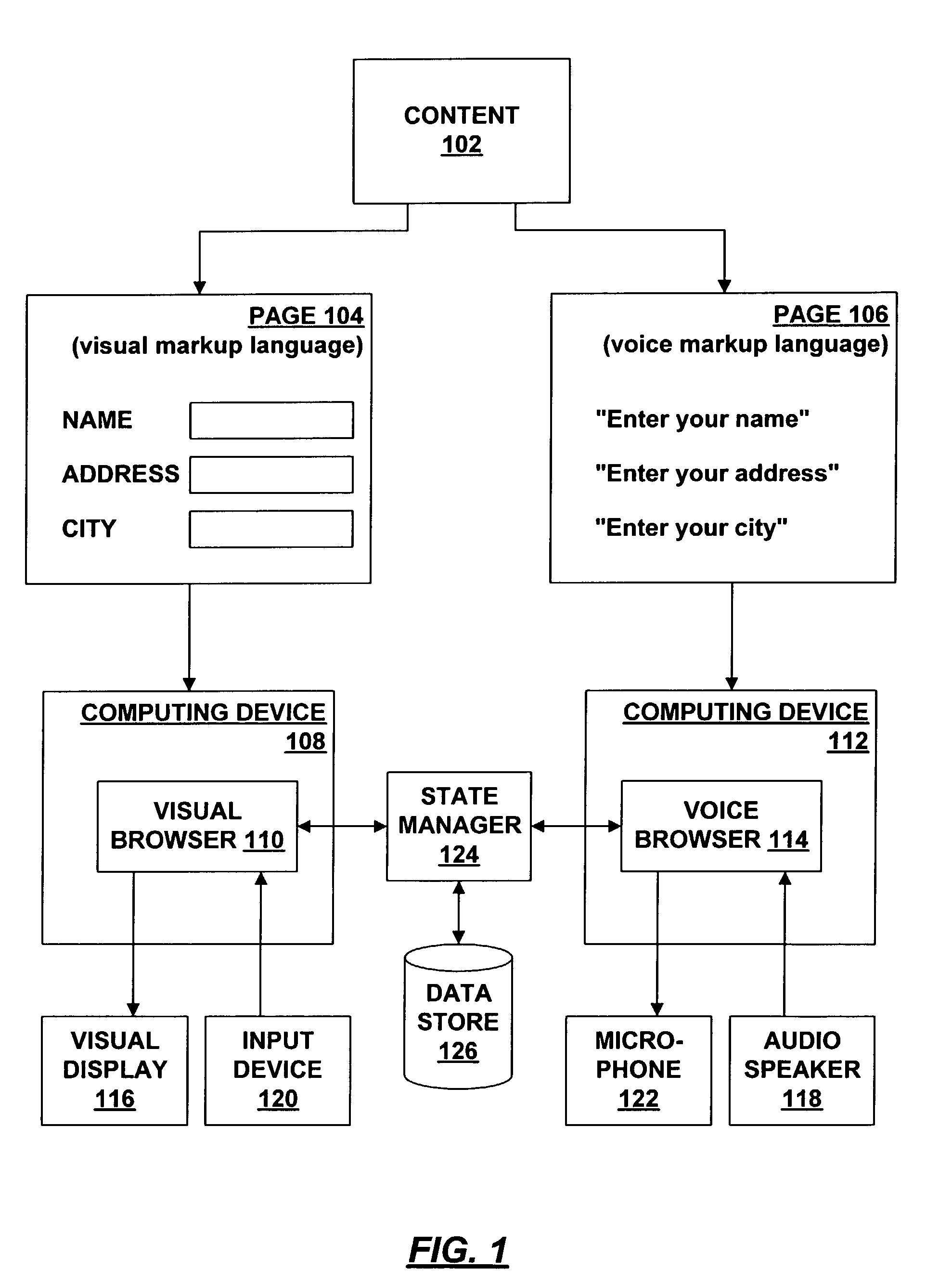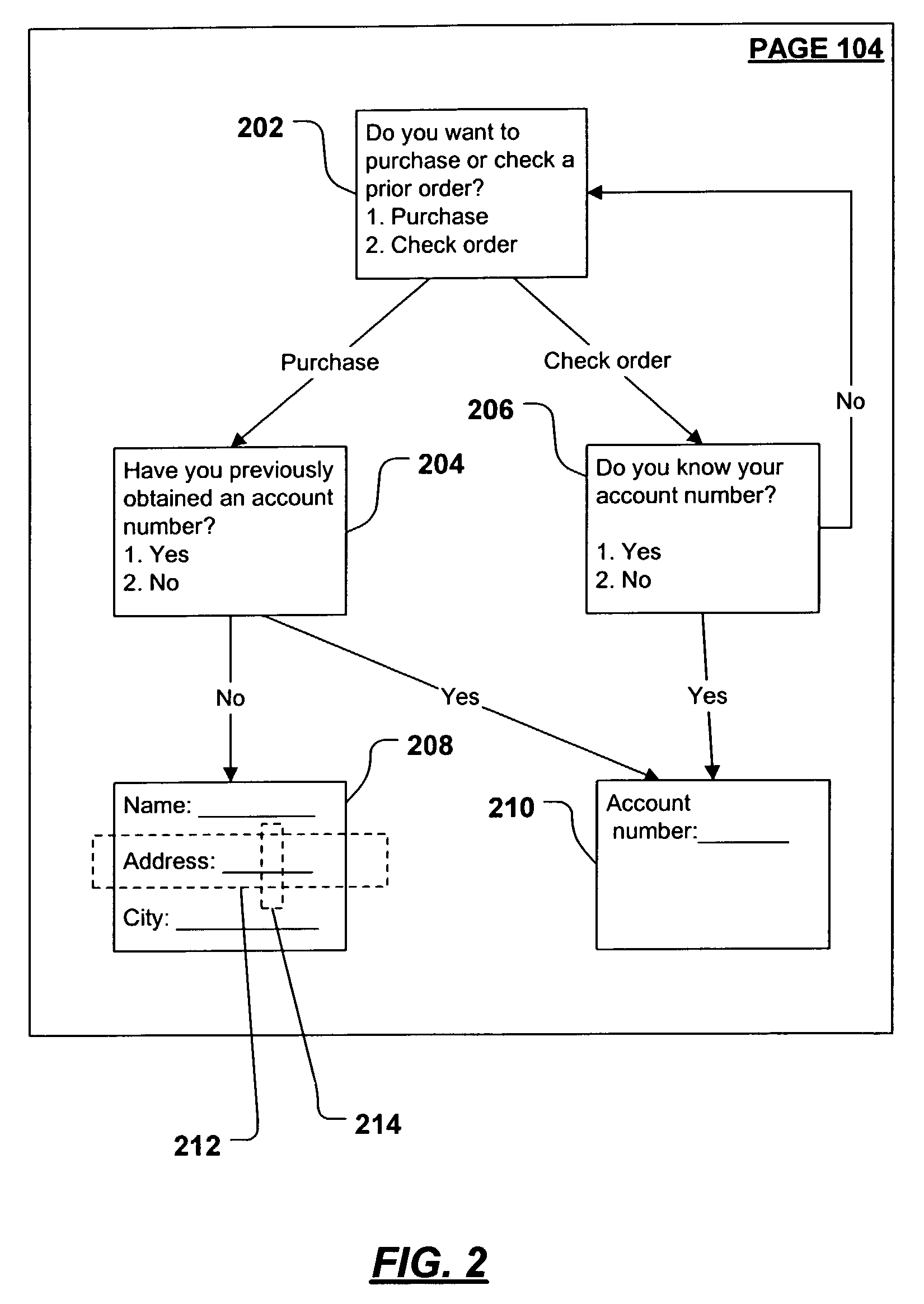Synchronization among plural browsers
a technology of plural browsers and synchronization, applied in the field of networked computing, can solve the problems of cumbersome speech and voice instruction receiving, current wireless data access technology, and integration and combined use of voice and visual interfaces to data
- Summary
- Abstract
- Description
- Claims
- Application Information
AI Technical Summary
Benefits of technology
Problems solved by technology
Method used
Image
Examples
Embodiment Construction
Overview
[0025]Wireless devices have traditionally been able to operate in only one input / output (“I / O”) mode at a time—i.e., either in an audio mode or a visual mode. For example, a traditional wireless telephone sends and receives audio (voice). Some new wireless telephones have a small display through which the user can view the “wireless web.” However, a user can use such a telephone only in one mode at a time, as the voice and visual features cannot generally be used in concert.
[0026]One way to support the use of voice and visual I / O modes in concert is for the content with which the user interacts to be provided in two similar forms—a visual markup language (such as Wireless Markup Language (WML)), and a voice markup language (such as Voice eXtensible Markup Language (VXML)). Supporting the concurrent use of voice and visual I / O modes in this manner generally requires that two browsers be running at the same time—one browser that generates visual images from version of the cont...
PUM
 Login to View More
Login to View More Abstract
Description
Claims
Application Information
 Login to View More
Login to View More - R&D
- Intellectual Property
- Life Sciences
- Materials
- Tech Scout
- Unparalleled Data Quality
- Higher Quality Content
- 60% Fewer Hallucinations
Browse by: Latest US Patents, China's latest patents, Technical Efficacy Thesaurus, Application Domain, Technology Topic, Popular Technical Reports.
© 2025 PatSnap. All rights reserved.Legal|Privacy policy|Modern Slavery Act Transparency Statement|Sitemap|About US| Contact US: help@patsnap.com



